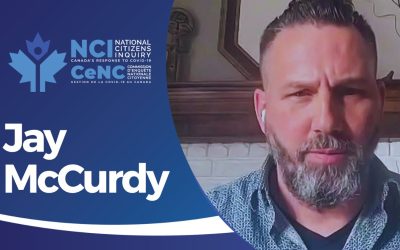
Frontier Centre: You have said that the city should provide excellent and diverse schools and yet this market has been blocked by the public school monopoly. How far has Milwaukee moved with a competitive model?
John Norquist: We have moved quite far. We have school choice. We have 102,000 kids in the public schools and then we have 11,700 kids in what we call “choice” schools which are Catholic and private schools. They get a voucher that is roughly equivalent to the state aid amount per child in the Milwaukee public schools. There is just as much money spent on public schools per child as private, but it does help support private education as an option.
FC: In your book you talk about the need for cities to maintain a vibrant public school culture as part of the quest for added value. Why has the traditional model – the monopoly local district governed by elected trustees failed to achieve that goal the way it once did?
JN: There is no accountability except as a political entity so it responds to political forces instead of parents. If you are looking at who cares the most about education, it’s the parents caring about their kid. Even an imperfect parent will know a good school from a bad one and is more likely to push for a good school than a bureaucrat would be. We have school choice in American cities in the sense that people, like say in Detoit, with money and kids leave town and go to one of the suburbs. If they don’t have money they are trapped in Detroit and it is a very vicious system. In Milwaukee we have choice and charters. You can live in the city and send your kid to a school. It is private and you don’t have to evacuate the city in order to seek education for your kid.
FC: How widespread is Milwaukee’s program of school vouchers? Is it expanding?
JN: It is expanding but there is only one other city in the country that has school choice and that is Cleveland. There are some little experiments in Arizona and Florida but Canada has it and probably hasn’t thought about it much. But if you live in Winnipeg or Toronto you can go to Catholic school or public school and you have different systems so, if people are dissatisfied with one they can go to the other. You have your independent schools which get partial funding. That’s school choice, just like in Holland you can go to any public, private or religious school. They even have Labour run schools in Holland. All kinds of choices – so, if you aren’t happy with one school you can go to another. The point is that parents have power to seek the education they want. In the U.S., typically, all the public money goes into the publicly owned schools so it is a monopoly in that the consumer doesn’t have much power. The United States ranks number one in higher education – colleges and universities where we do have school choice. We rank somewhere like 26th in K through 12 education – right behind South Korea and right ahead of Portugal. So, a monopoly model doesn’t produce quality and whereas cities are naturally set up to provide high value goods and services, because of all the people that are close together, the monopoly model suppresses the urban advantage.
FC: Inner city parents in Cleveland had to patronize religious schools because suburban school districts refused to open their doors to vouchered students. Is that also the case in Milwaukee or can students cash in their vouchers anywhere?
JN: It is a slightly different part of the system – it is not paid in the same way. Any kid in Milwaukee can apply to go to a suburban school and, if there is room, they will get in. Any kid from the suburbs who wants to come into a Milwaukee school, if there is room, they can come in. That is the public side of the system. Then, we also have charter schools, some of which are private. If you live in the city you don’t have to pay tuition, if you live in the suburbs you have to pay tuition. So there is an advantage to living in the city. Then we have the choice program which has about a $6,000 voucher for each kid.
FC: How much of the current cost of public schooling do Milwaukee’s vouchers cover? Do parents have to top it up with out-of-pocket funding?
JN: Schools are not allowed to charge voucher students any more than the amount of the voucher which is about $6,000 USD.
FC: Who pays the cost of vouchers – school boards, the City of Milwaukee or the State of Wisconsin?
JN: The State of Wisconsin pays over half of the cost of public education and actually two-thirds of the cost of public education on average in the State of Wisconsin. Milwaukee is about your average property value so it is about two-thirds as big.
FC: So you have property tax to pay for schools?
JN: Yes, property tax pays the rest of it. For the voucher program, it is the amount of the voucher behind the kid and that’s all the school can get for that kid. They are not allowed to levy any other fees.
FC: Has there been any opportunity to measure academic performance among vouchered students in Milwaukee or to compare it with pre-voucher performance?
JN: Yes, there is a slight but significant improvement for kids who go into the voucher program but, more importantly, the competition of the voucher program has given the public school system a reason to improve so they have expanded popular programs like Montessori schools. The public school’s graduation rate has increased and the reading levels and math levels have gone up. So, I don’t want to replace the public system with the private system – I just want a multiple system so that parents have the maximum amount of choice if they live in the City of Milwaukee.
FC: Many argue that deterioration in academic standards in public schools has more to do with defects in the surrounding culture than with poor curricula or poor teaching methods. Don’t even the most well-funded suburban schools have as many problems with performance as the poorest inner city facilities?
JN: I think that statement is true but then my question to that is, so what? There is no question that poor people produce children that are more likely to have problems and not do quite as well in school – their parents tend to be less educated – but, is that an excuse? The idea is to try to improve the situation and not provide excuses for not delivering high value education. So, yeah, it is easier on balance to educate rich kids than poor kids but the poor kids need to be educated so let’s get on with the job.
FC: As a Democrat you no doubt appreciate that one of that party’s long time constituencies, the teachers’ union, is adamantly opposed to school vouchers. How much political trouble have you encountered because of your support for them?
JN: Well, I have never had the teachers’ union on my side in an election. I would be shocked if they did support me but I do respect them and we have had some positive efforts by the local union after they got over their bitter fight to the end to try to defeat school choice. They occasionally revive the fight but in between they have actually instituted some reforms that have helped to improve their flexibility for teacher assignment and things like that.
FC: Do you have merit pay for teachers?
JN: We don’t have merit pay but our union has actually been fairly responsible in trying to improve the situation. They know they need to improve the performance of MPS students partly just because they don’t want to be compared unfavourably with the choice program.
FC: The argument for school choice seems pretty commonsensical and the majorities of parents who attend failing schools see its logic but the education industry itself remains unconvinced if the attacks in the professional literature is any indication. What flaws in the conventional wisdom about public schools blinds them from the stronger appreciation of choice?
JN: Well, as choice now is only in Milwaukee and Cleveland, I think as it spreads – which I think it will now because of the Supreme Court decision that came out this summer – with more miles on the ground eventually the opposition to school choice will crumble. It is very similar to the Warsaw Pact opposition to the Berlin Wall coming down. Once the Wall became so ridiculous it was sort of laughed down almost. The idea that all government money should go into government owned and operated school buildings, as opposed to having the customer having some choice, is an idea that is really only in the United States. Even Sweden has school choice – you can go to a religious school in Sweden and the government pays. All the countries in Western Europe have forms of school choice. Canada has it. Eventually, it will spread throughout the United States and we won’t be debating it anymore. One thing I always point out to the teachers’ union is that school choice is at its most prolific in the Netherlands and teachers’ salaries in the Netherlands are about 20% higher than teachers’ salaries in the United States. So, if school choice is bad for teachers how come they get paid so much in the Netherlands?
Read in PDF format here.



